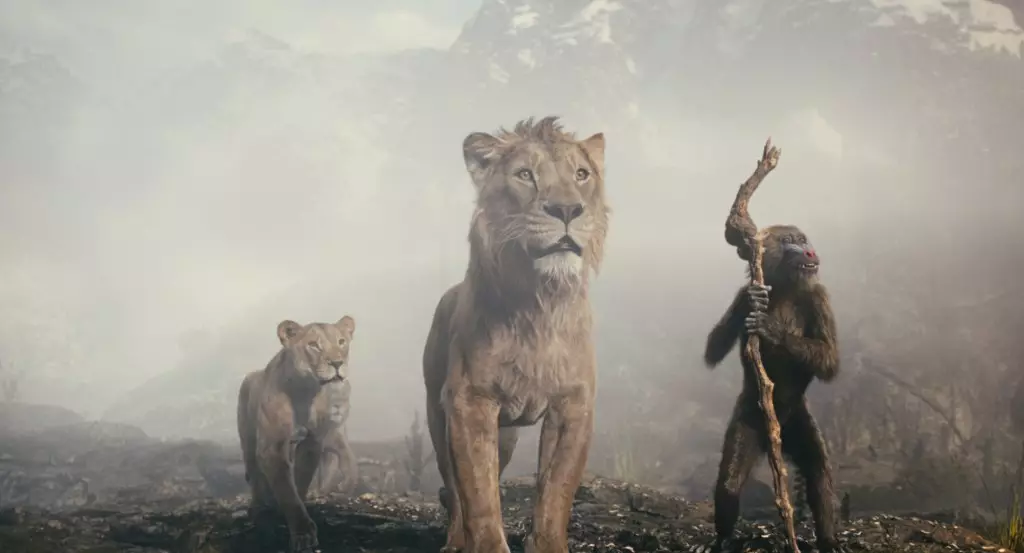In the fiercely competitive world of theatrical releases, few battles have been as intriguing as that between Disney’s “Mufasa” and Paramount’s “Sonic the Hedgehog 3.” While “Mufasa” initially stumbled out of the starting gate, raking in a domestic opening of $35.4 million compared to “Sonic’s” impressive $60 million, it has shown remarkable resilience in the weeks following its release. As of the last reports, “Mufasa” is on track to surpass “Sonic the Hedgehog 3” at the domestic box office after a sustained period in theaters.
Both films, having been in release for 45 days as of Sunday, reported cumulative earnings that were alarmingly close: $229.5 million for “Mufasa” and $230.5 million for “Sonic.” This narrow gap illustrates not only the volatility of box office performance but also the factors that contribute to a film’s longevity in theaters.
One notable strategy employed by Disney with “Mufasa” was its longer theatrical window, which allowed it to maintain a presence in key IMAX and Premium Large Format (PLF) screenings. Exhibitors have shown an appreciation for movies that respect the traditional distribution timeline, and this approach has made a substantial difference in the film’s performance. In contrast, “Sonic the Hedgehog 3” opted for a quicker PVOD release, which occurred just 32 days after its opening weekend.
This difference in strategy prompted interesting outcomes at the box office. As “Mufasa” gears up for its PVOD release on February 18, it boasts a cumulative box office standing of around $652 million globally. Although it doesn’t compare to its predecessor, “The Lion King,” which amassed a staggering $1.66 billion in 2019, “Mufasa” is still celebrating a respectable financial achievement given its production cost of $200 million.
The battle between “Mufasa” and “Sonic the Hedgehog 3” is reflective of broader audience trends in cinema. While animated family films often dominate the box office, there is a growing trend of audiences gravitating towards sequels and franchises that promise nostalgia and connections to beloved characters. “Sonic,” having built a reputable brand through a successful video game franchise and reception from its earlier film, attracts a particular demographic that cherishes its retro roots.
On the other hand, “Mufasa,” part of the esteemed Disney legacy, has been leveraging its engaging storytelling and a driven marketing campaign that promises a deeper examination of the “Lion King” mythology. However, it also highlights the dichotomy between traditional box office revenue and the potential profits from digital streaming options.
Looking Forward: Home Entertainment vs. Theatrical Experience
With “Mufasa” set to arrive on PVOD after its 60-day theatrical exclusive, attention will turn to how it capitalizes on home entertainment sales. The anticipated Blu-ray release planned for April 1 is generating buzz, with a robust slate of bonus features, including behind-the-scenes content, music videos, and sing-alongs. These features emphasize audience engagement, enticing families to purchase physical copies to enjoy additional content together.
As the home entertainment landscape evolves, the dynamic between theatrical releases and digital options will continue to reshape how films are marketed and monetized. The success of “Mufasa,” despite initial setbacks, exemplifies the effectiveness of patience and long-range planning in an industry often driven by immediate financial returns.
A Final Reflection on Box Office Rivalries
The saga of “Mufasa” and “Sonic the Hedgehog 3” is emblematic of the competitive spirit in the film industry. While first impressions matter, they often do not dictate long-term success. As we observe the outcomes of these two films, it’s clear that strategies regarding release scheduling, audience engagement, and home media content play significant roles in shaping box office success and longevity.
Encouragingly, the results of this rivalry only highlight the potential for diverse storytelling to thrive. Given the fresh perspectives offered in both films, audiences continue to support companies willing to innovate while remaining true to their beloved franchises. Ultimately, the stronger a film can connect with its audience, the longer its roar will resonate at the box office.
